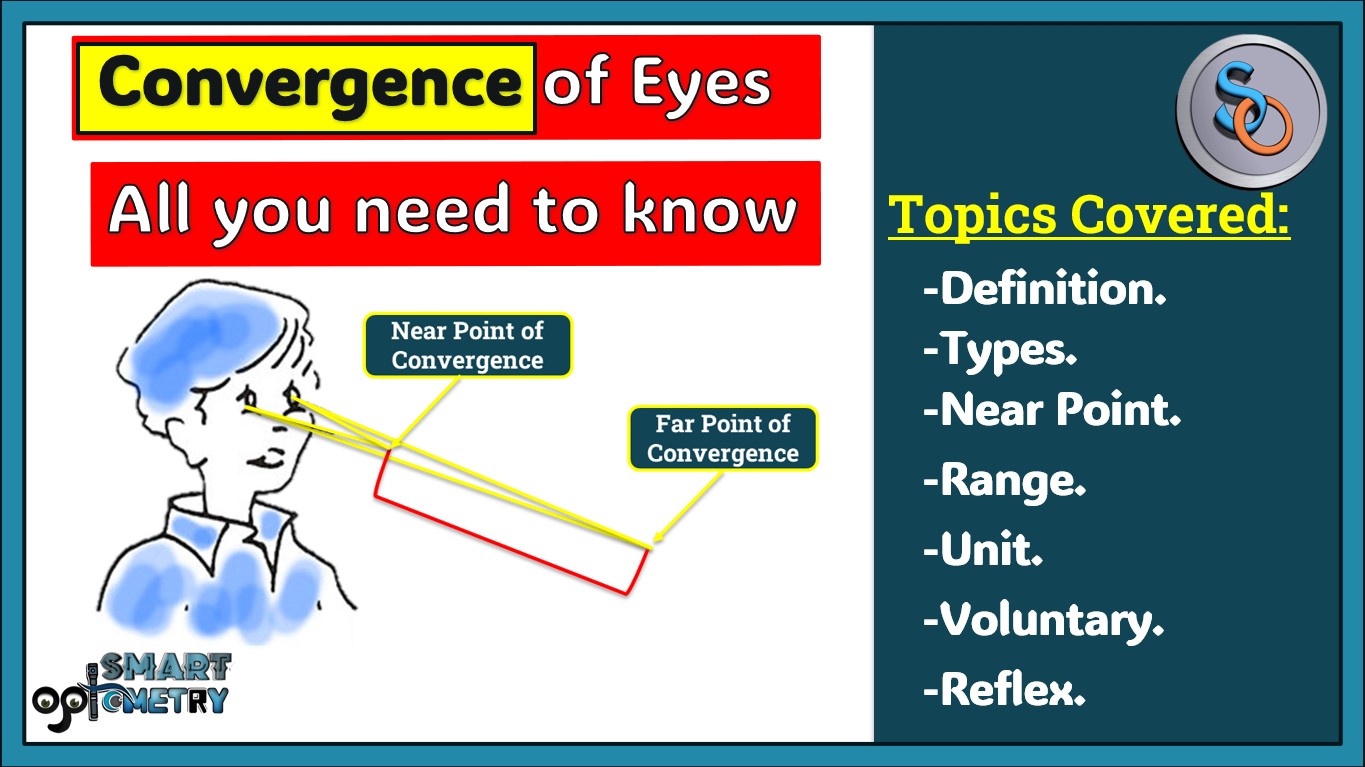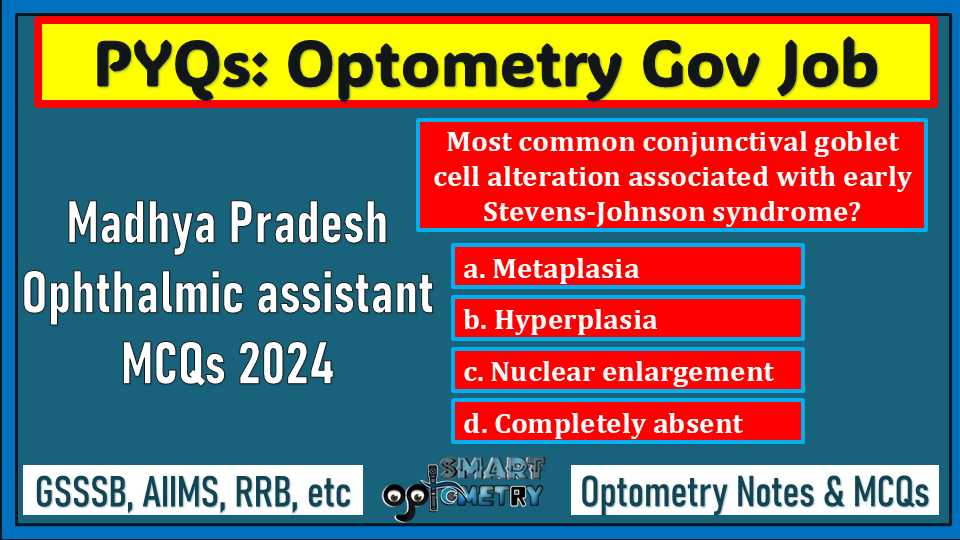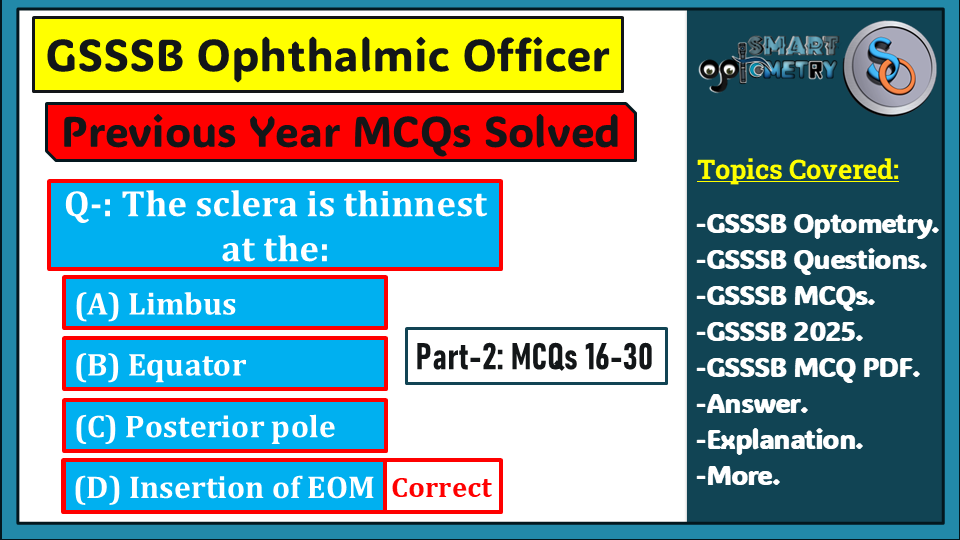Table of Contents
What is Convergence of Eyes?
- Simply, converging of both eyes towards each other is called convergence of eyes.
- Convergence is a vital ocular movement where both eyes turn inward, aligning their lines of sight to meet in front of the eyes.
- This ensures seamless single vision with two eyes at any fixation distance.
- Unlike accommodation, which may decline with age, convergence tends to remain consistent over a lifetime.
- However, certain abnormal conditions can affect it adversely.
- Fortunately, exercises can help enhance convergence strength.
Why do we need convergence of eyes?
- In our eyes, retina of both eyes is corresponded to each other; temporal retina of one eye is corresponded with nasal retina of other and nasal retina of one is corresponded with temporal retina of other eye.
- When we see any object in our visual field, rays from the object stimulated the two corresponding points of each eye and we see the object single 3D dimension.
- If rays from the object don’t stimulate corresponding points of both eyes, then diplopia or double vision will occur.
- Convergence is the mechanism through which our eyes converge towards each other so that corresponding points from both retinas can be stimulated simultaneously.
- Characteristics of Convergence of eyes:
- Convergence is a disjugate movement.
- It allows bifoveal single vision.
- Convergence remains same throughout life.
- Can be increased by exercises.
Symmetrical Vs Asymmetrical Convergence:
Symmetrical convergence:
- When the fixated object is situated in the sagittal (medial) plane of head, both eyes have to converge equally thus this condition is called Symmetrical convergence.
Asymmetrical convergence:
- When the fixated object is situated away from the sagittal (medial) plane of head, the distance will be different from both the eyes and also amount of convergence will be different, thus this condition is called asymmetrical convergence.
If object is left to the sagittal line, right eye will need more convergence than left eye.
Types of Convergence:
- Convergence can voluntary and Reflex:
Voluntary Convergence:
- Voluntary convergence of eyes can be done at will.
- It is not a part of normal convergence movement.
- Not everyone is capable of doing or learning this.
Reflex Convergence:
- It is the convergence of eyes which is not under complete voluntary control.
- Reflex convergence has four components:
- Tonic Convergence.
- Fusional Convergence.
- Accommodative Convergence.
- Proximal Convergence.
1. Tonic convergence:
- Tonic Convergence occurs due to inherent innervational tone of the extraocular muscles when the patient is awake.
- It disappears under deep general anesthesia.
- Tonic convergence is most prominent in childhood and decreases with age.
- The emotional energy level of the individual may affect tonic convergence.
2. Fusional convergence:
- Fusional convergence occurs to ensure the fusion of the images of both eyes.
- It occurs without a change in refractive state of the eye and is initiated by a bi-temporal retinal image disparity.
- The normal fusional convergence amplitude for distance is about 18 PD and for near it is 35 PD.
3. Accommodative convergence:
- It is the convergence that occurs when the eyes accommodate.
- The afferent and efferent pathway of accommodation and convergence is quite similar thus when a nerve impulse is discharged to the eyes to accommodate, convergence is also activated.
- This link between Accommodation and Convergence is called AC/A Ration.
- The normal AC/A ratio is about 3-5 prism dioptres (A) for 1 D of accommodation.
4. Proximal convergence:
- Proximal convergence is induced by the proximity/nearness of the object or the awareness of the proximity/nearness of a near object.
- It occurs also when a subject just believes that he or she is looking at a near object, although he or she actually is not.
- For example, while looking at the autorefractometer target optically set at infinity, proximal convergence is often induced.
- It has been found that for about 1D of change of fixation distance, an approximate change of 1.5MA occurs in proximal convergence.
Angle of Convergence:
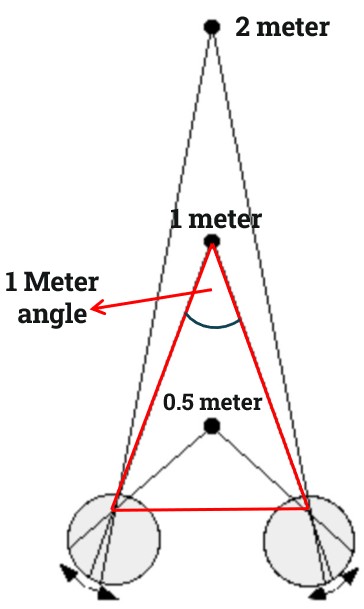
- It refers to the angle that is formed between the primary lines of sight of both eyes during convergence.
- Its size depends on the fixation distance and IPD.
- With increasing distance angle of convergence becomes smaller and Vice versa.
- With increasing distance IPD, angle of convergence becomes larger and vice versa.
- Convergence angle can be measured in meter angle or in prism dioptres.
Meter Angle:
- One meter angle convergence is exerted by each eye when the eyes are directed to an object at a distance of 1 m of the meridian line between the two eyes.
- It has been estimated that roughly 1 MA convergence is equal to 3PD convergence.
Components of Convergence:
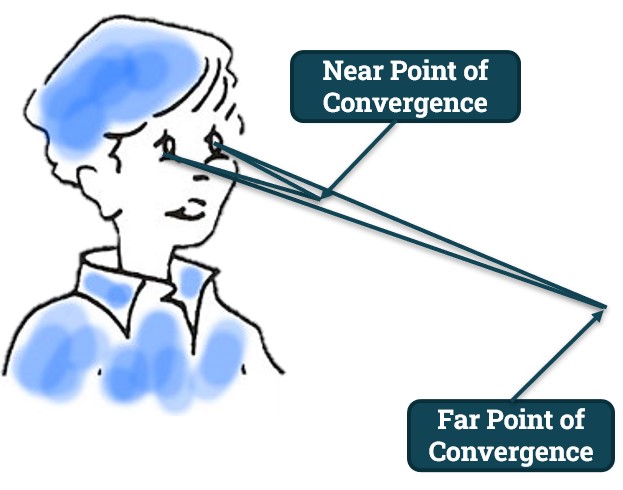
Near point of convergence(NPC):
- It is the closest point at which an object can be seen singly during bifoveal vision.
- In other words, it is the point at which the two foveal lines of sight intersect when maximum convergence is exerted.
- It is always closer than the NPA and is usually less than 8 cm.
Far point of convergence:
- It refers to relative position of the eyes when they are completely at rest.
- It is usually infinity.
- At rest, the eyes may be in slight divergence and so the far point of convergence may be in negative (behind the eyes).
Range of convergence:
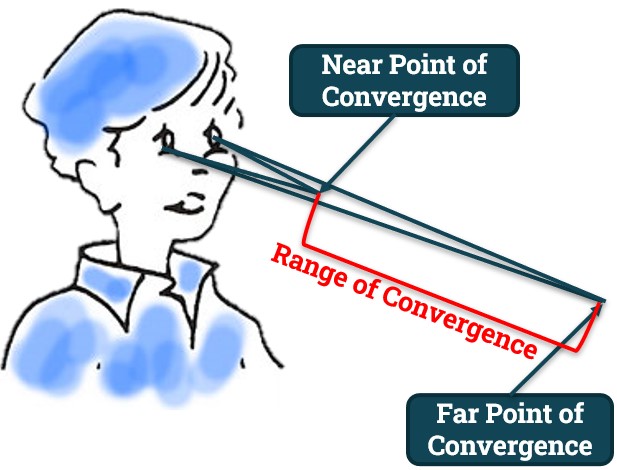
- It is the distance between far point of convergence and NPC.
- The part of the range of convergence between the eye and infinity is called positive convergence, and the part beyond infinity, i.e. behind the eye (when eyes are in slight divergence) is called negative convergence or divergence.
Amplitude of convergence:
- It refers to difference in the convergence power exerted to maintain the eye in a position of rest and in a position of maximum convergence.
- Check Our Courses: Ophthalmic Instrumentation, Clinical Refraction, Contact Lens, Binocular Vision, Dispensing Optics, MCQs in Optometry
- Download our App “Optometry Notes & MCQs” from Google Play Store.
What My lecture about Convergence of our eyes:

